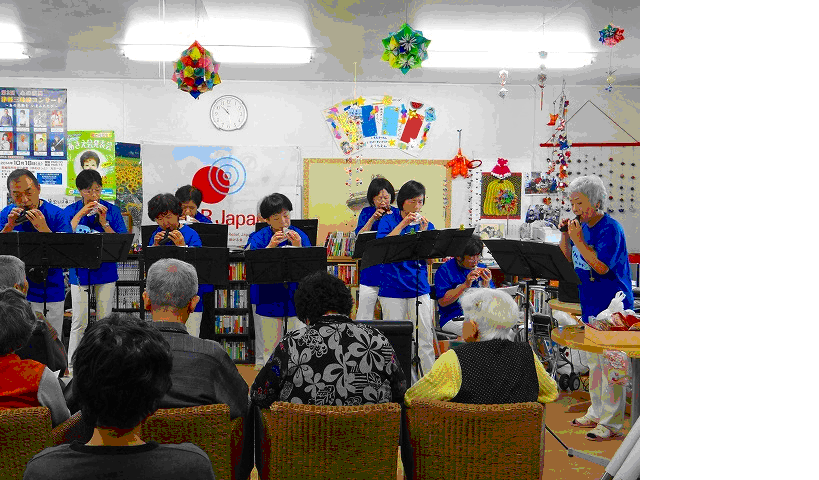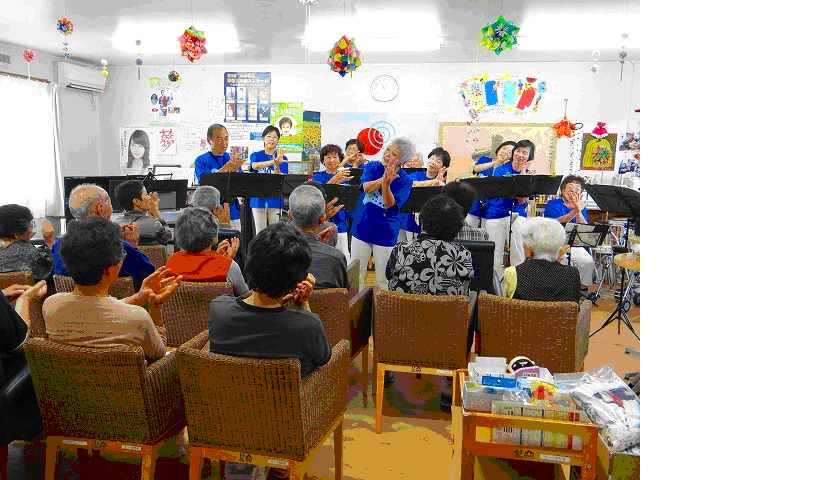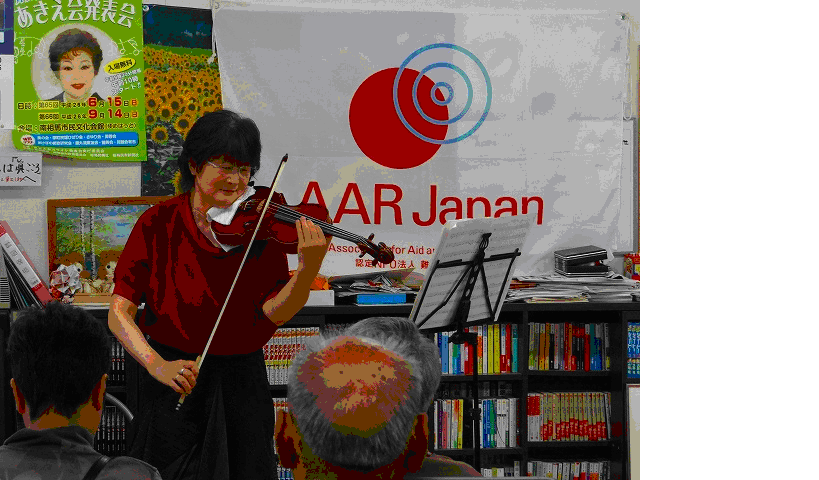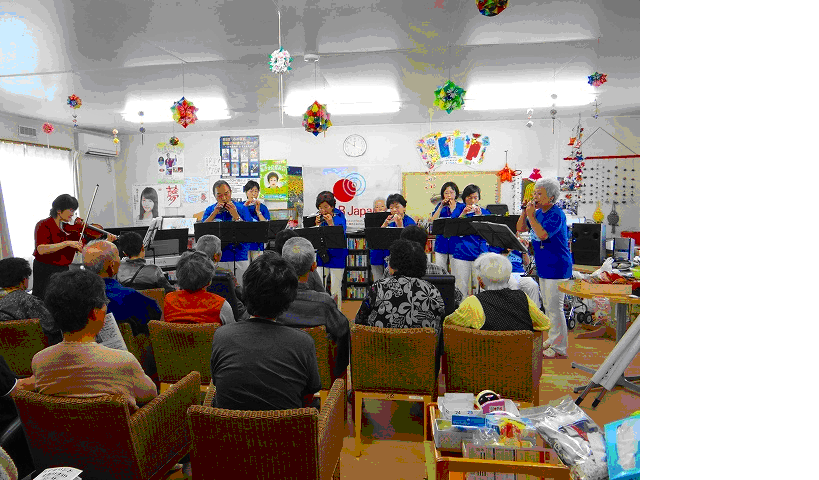By Karl Yanagisawa | Programme Coordinator
AAR Japan organises a variety of events for temporary housing residents, who have been living in a dire situation ever since the 2011 Tohoku earthquake and tsunami, for the purpose of giving joy and encouragement to, and revitalising communities.
As one of such efforts, we organized violin and ocarina concerts at a temporary housing complex and community hall in Minamisoma City, Fukushima Prefecture and Watari Town, Miyagi Prefecture on 4th and 5th of October, 2014. The temporary housing complex in Minamisoma City accommodates evacuees from Odaka-Ku near Fukushima Daiichi Nuclear Power Plant. Their home was not only destroyed by the earthquake and tsunami, but also contaminated by radiation from the power plant, which prohibits the evacuees from returning to their homes. Watari Town is located in the coastal area in the south of Miyagi Prefecture and had a vibrant town life with a prospering fishing industry and a popular beautiful beach before the disaster.
On this occasion, we invited Ms Mitoko Sato, a Japanese violinist active in France who has been playing the violin in the disaster-stricken areas, to play in the temporary housing communities. ”I live off music”, she says and explains that “the only way that I can help the disaster survivors is through music”. At the concerts, she collaborated with a group of local ocarina musicians from Soma City, Fukushima Prefecture, upon her request.
The concert started off with ocarina performance. The local musicians played Japanese popular songs, folk songs, and local traditional songs. The warm timbre of ocarina brought smiles to the residents of temporary housing complexes. Violin performance of classic music, which followed the ocarina performance, fascinated the audience, as well. The highlight of the concert was the joint performance of ocarina and violin. They played chorus music, which everyone knows from his/her school days, as well as Japanese National Television’s rooters’ song, “Hana wa Saku (Flowers bloom)” “Hana ha Saku” was performed alongside sign language. The harmony of the violin and ocarina was truly beautiful. The audience brought back smiles to home after the concerts.
Three years and eight months after the disaster, some progress toward rehabilitation can be recognised in terms of construction of private housing and public permanent housing for the evacuees. However, approximately 188,000 people still live in temporary housing complexes in three prefectures affected by the 2011 Tohoku earthquake and tsunami. In order to support these evacuees and survivors, AAR Japan is determined to continue our assistance activities in disaster-stricken areas.
By Kayo Oda | Programme Coordinator
By Kayo Oda | Programme Coordinator
Project reports on GlobalGiving are posted directly to globalgiving.org by Project Leaders as they are completed, generally every 3-4 months. To protect the integrity of these documents, GlobalGiving does not alter them; therefore you may find some language or formatting issues.
If you donate to this project or have donated to this project, you can receive an email when this project posts a report. You can also subscribe for reports without donating.



